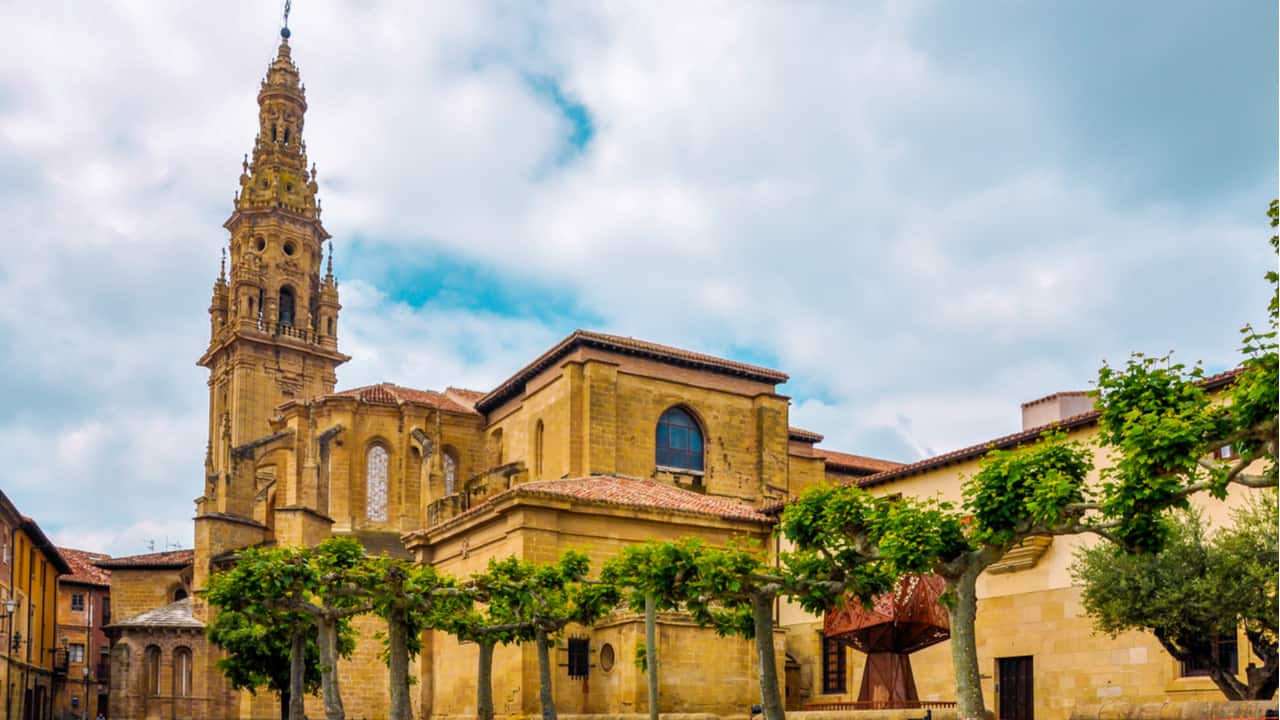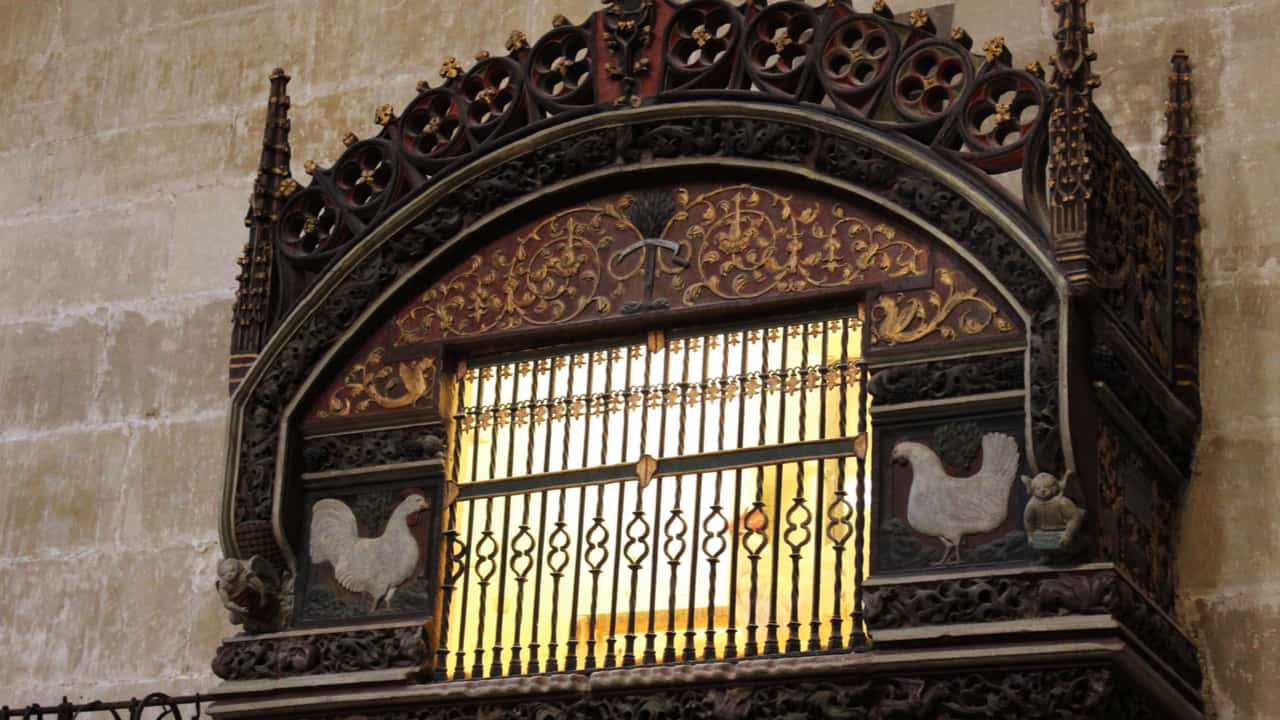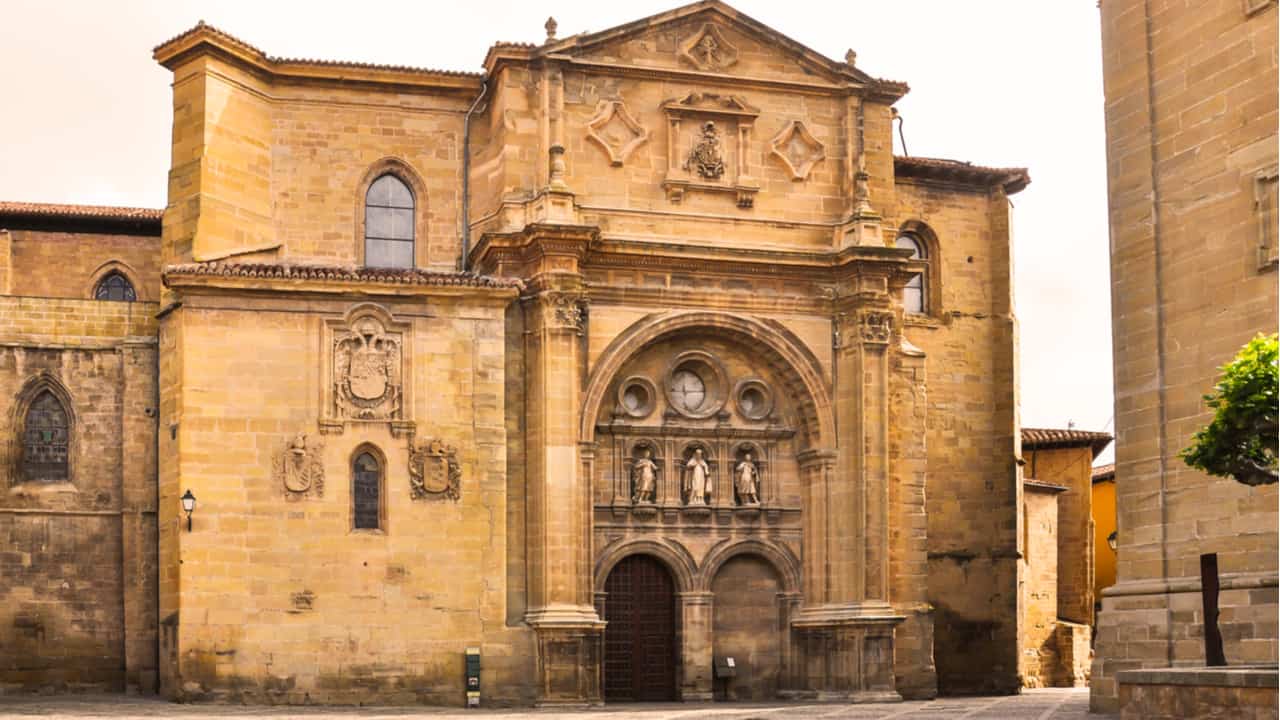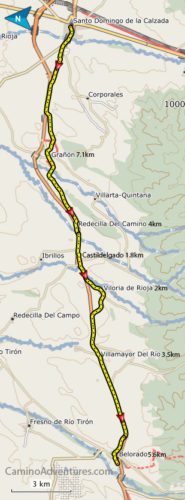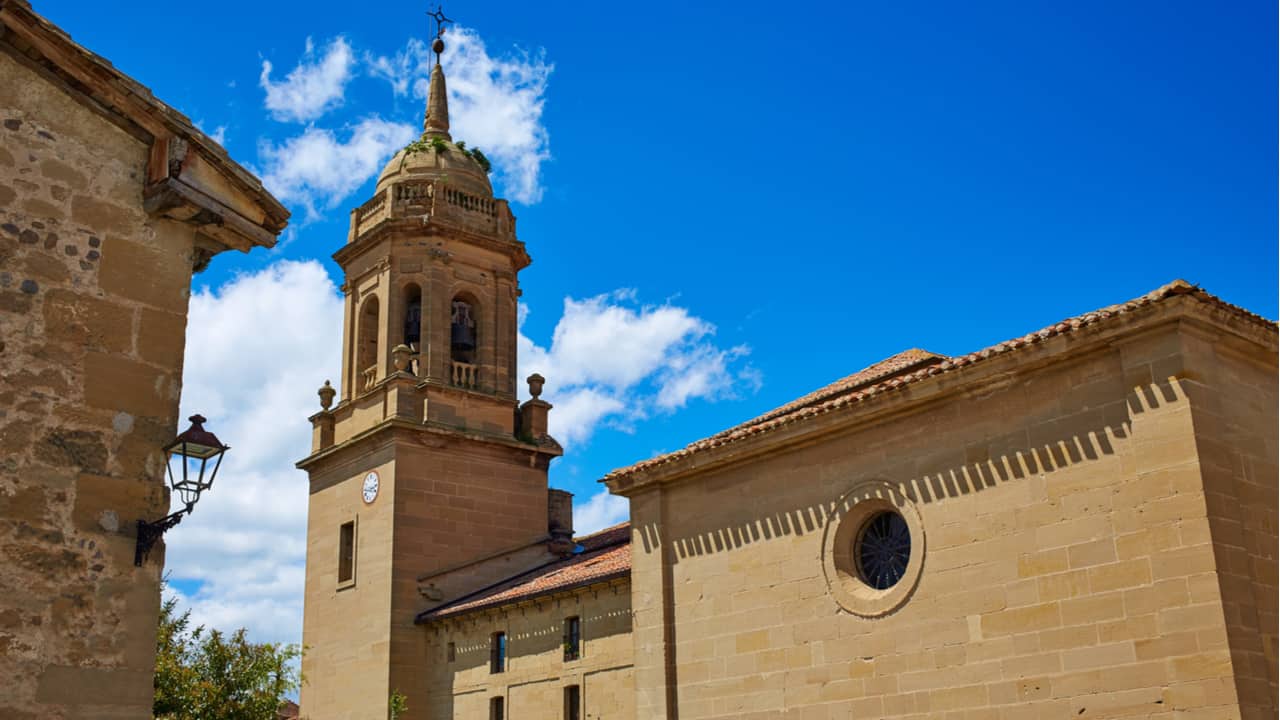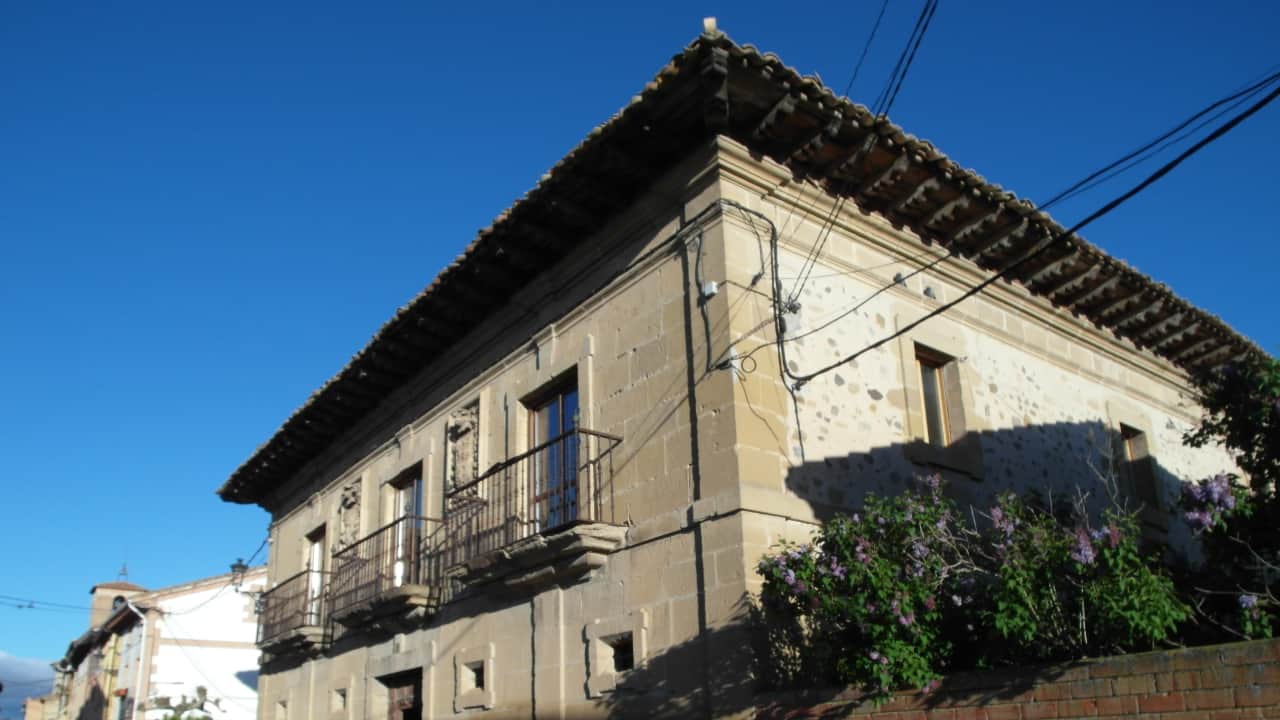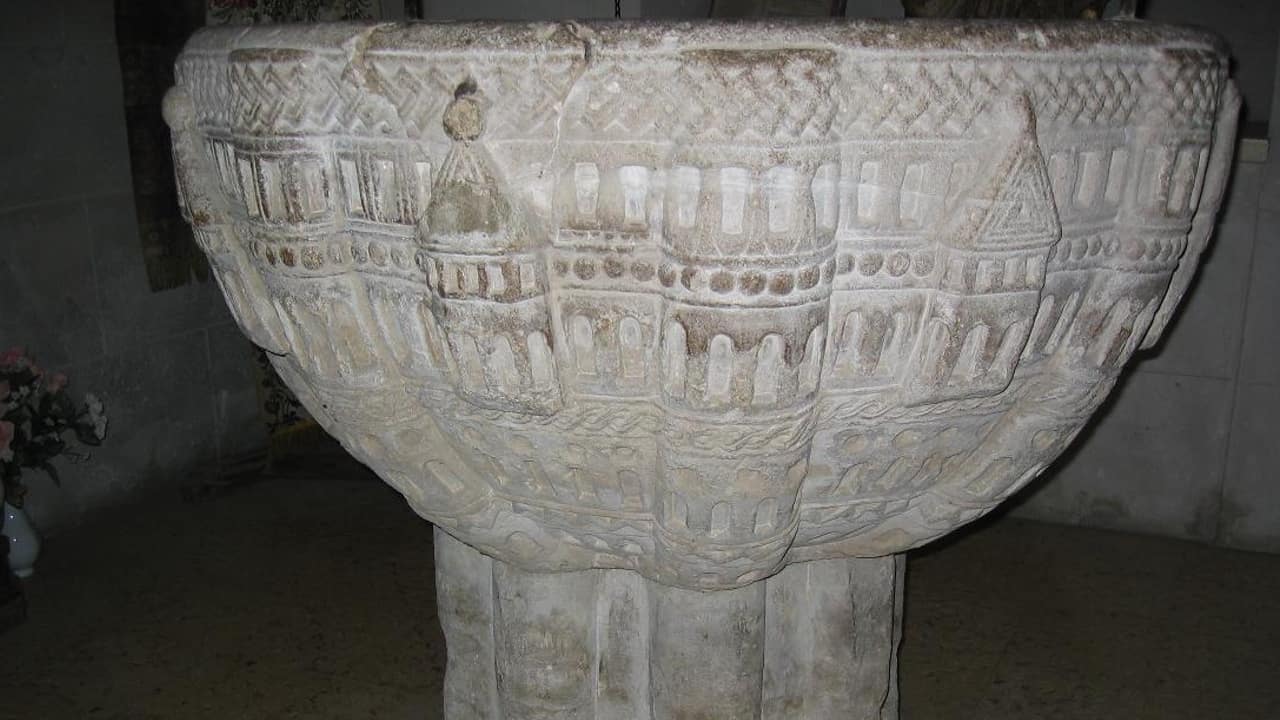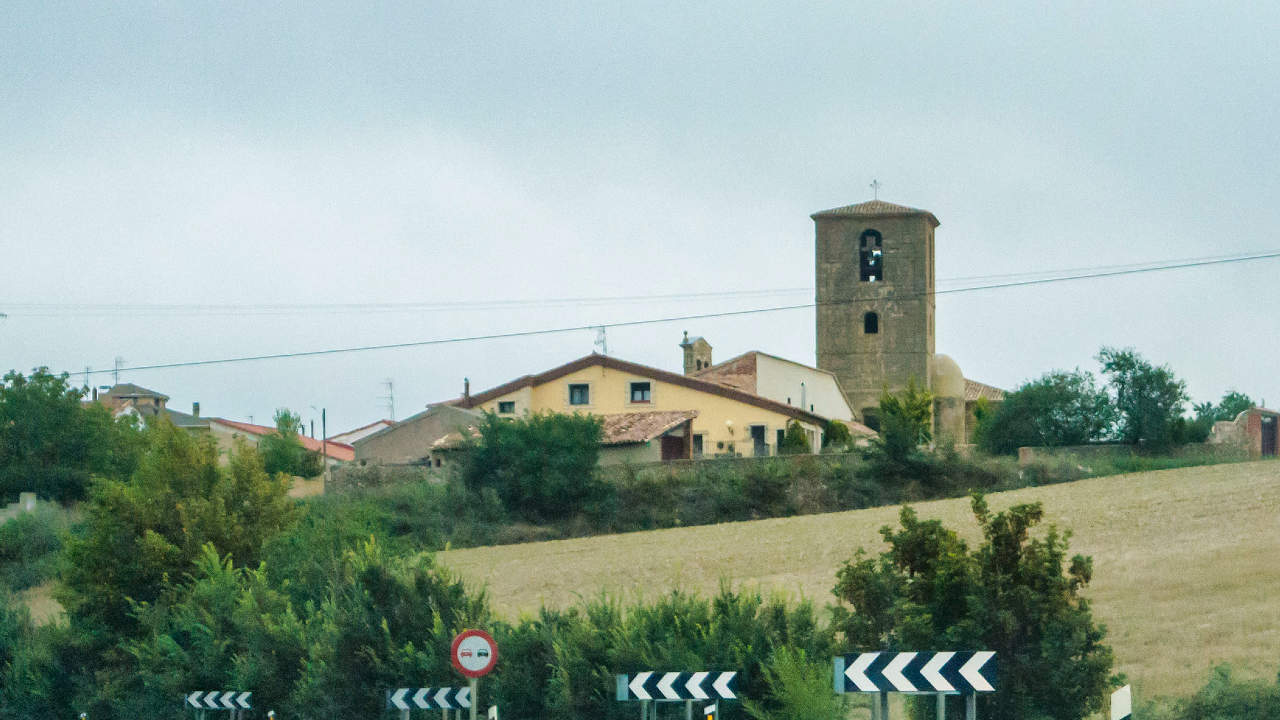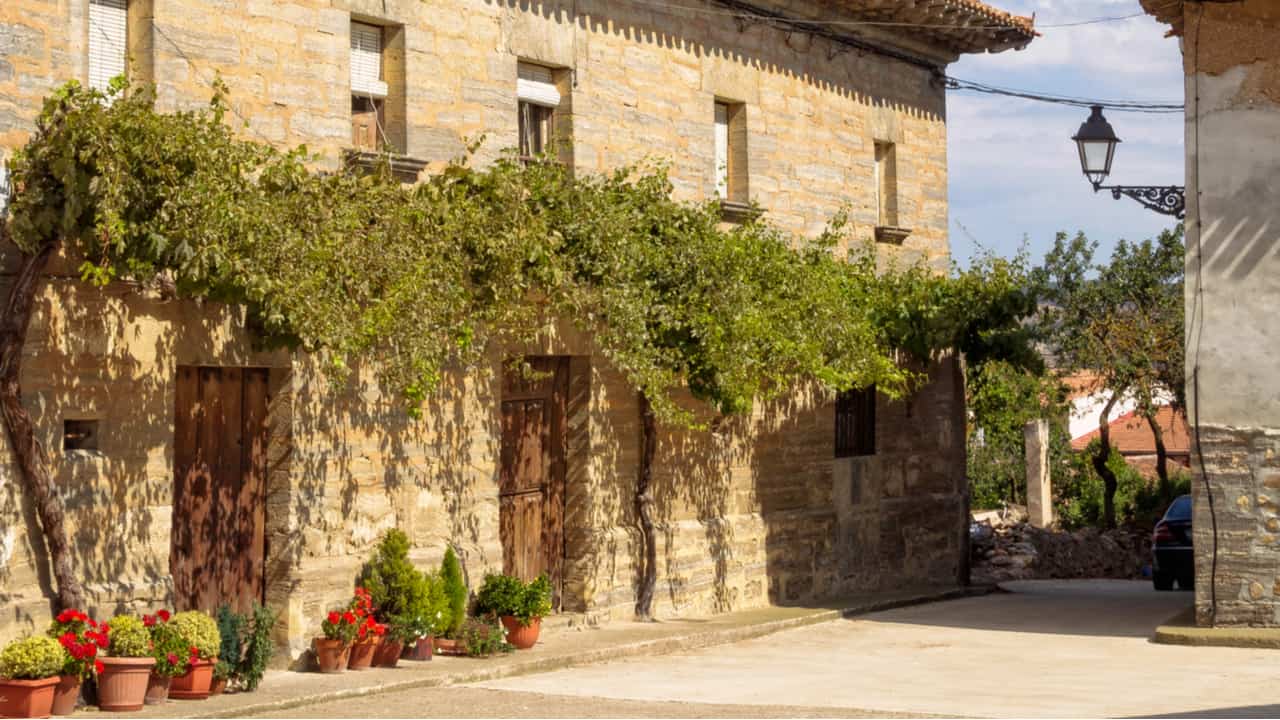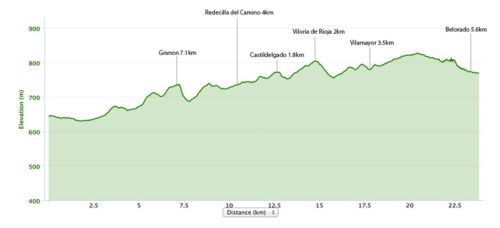Santo Domingo de la Calzada is named after Saint Dominic, (pop. 6,700), and has been declared a site of historic interest. The tourist office is near the cathedral on Calle Mayor.
St Dominic was born nearby in the village of Viloria and studied at both the monastery of San Millan and Abadia de Valvanera. However, he did so poorly in his studies he was not allowed to continue.
This did not deter him from a life of religious service aiding pilgrims on the the way to Santiago. He built a bridge at the westerly end of Santo Domingo over the river Oja, a pilgrim’s hospital, and a hostel (now a Parador).
The most interesting legend that surround him is the clearance of a stretch of road between Najera and Redecilla de Camino. It is said he used a sickle to cut 37 km through the forest and when he stopped to pray angels continued to clear the way with the sickle.
Another version of the same legend tells us that the villagers of nearby Ayuela give him permission to cut as many trees in a day for wood as he could with his sickle, he made only one cut felling a single tree, but the end of the day he had all the wood he required. I prefer the first.
Santo Domingo de la Calzada is most famous for the legend of the cock that crowed again. There, as is usually the case, are several versions of this legend.
A couple from Cologne were travelling to Santiago de Compostela on a pilgrimage with their son, Hugonell. Apparently the innkeepers daughter took a fancy to him and he virtuously resisted her advances.
She took a silver goblet and hid it in his possessions, in the morning she denounced him as a thief and he was hanged. When his parents were preparing to depart they heard his voice telling him that he was still alive; St Dominic was holding him up by his feet.
The parents ran off to tell the magistrate the story. The magistrate laughed it off and said their son was no more alive than the cock and hen on his plate. At that instant, the birds grew feathers, jumped off the plate, and fluttered around the room proving that their son was innocent.
There are various versions of this legend in other routes to Santiago at Utrecht, in Toulouse, and Barcelos.
As can be seen above there is a Gothic carved pen for a cock and hen inside the cathedral, where you are asked not to take photos, while surrounded by pilgrims snapping away.
The birds are changed every two weeks and the chicken coop is at the rear of the albergue run by the Spanish Confraternity. It is of course considered lucky if you hear the cock crow…
The Cathedral Santo Domingo de la Calzada is a mainly Gothic construction built over St Dominic’s original Romanesque church. Again it is a church that has been built many times over the years.
After the original work during the 10th and 11th century, the second wave of construction added some French Romanesque influence during the 13th and 14th century.
As the pilgrimage boom declined the church crumbled and the bishop in the 14th century offered indulgences to donor for restoration, which were mainly defensive; the nave was reroofed in the 16th century with side chapels being added later.
Then, during the 18th century, the sixty-nine-meter Baroque tower was added. It is worth putting aside at least an hour to fully see the cathedral; or at least take 10 minutes to pay your respects to Santo Domingo at his tomb inside.
My thought for today is inspired by the girl in the inn. Her behavior was an outlandish illustration of control and revenge. It makes me wonder where I try to control others and whether I wish for revenge when I am thwarted. I see revenge in actions that are designed to hurt or punish.
Today’s Walk: 24 km
Once again the Camino Frances follows closely to the N120. Most of the day it runs along side and occasionally diverts into towns and across fields.
The route is fairly easy-going underfoot with mostly gravel paths along the side of the road and farm tracks when away from the N120; but as usual on the Camino there are many ups and downs.
Leave Santiago Domingo along Calle Mayor and cross the bridge over the River Oja; the bridge that was originally built by St Dominic.
Later today we will walk through Viloria de Rioja, his birthplace. The first uphill climb is short but steep into Granon, and the route descends steeply afterward.
You cross the La Rioja – Castilla border about 2km after Granon while strolling through the middle of cornfields and farmland. The earth and landscape change as you enter wheat country.
The next coffee and watering stop is not far – Redecilla del Camino, another small village. Every few kilometers today there will be a small village for water, food, and refreshments.
Belorado has all the amenities of a modern town; it is the main rural center for the area.
Halfway between Santiago Domingo and Granon, there was the Cross of the Brave, (it has now be replaced by a sign), this marks the site of a local Granon legend.
It is said that the villagers from Granon had disputes and altercations with citizens from Santo Domingo, as they cut down trees on disputed land at Ballana.
The two towns put forward their champion to fight in order to decide who owned the land. The Legend of the Brave says the fighter from Santiago Domingo arrived smeared in oil and the only way Martin Garcia, from Granon, could hold him was by a finger in his anus – which he used to throw him away and thereby win.
Martin Garcia asked the villagers to say a prayer for him each day on the anniversary of the fight as he passed away days after the fight.
Granon
7 km, cafe, bar, shop, water
It is a steep walk uphill into Granon the first village after Santiago Domingo. Granon is small and has little to hold the pilgrim for any amount of time, except for the main church which also houses the albergue.
This is one of the friendliest albergues along the Camino; I have stayed there twice now.
In the evening they have a communal dinner – sleeping is on floor mats within the church bell tower. It is worth at least stopping to climb to the top of the bell tower for the views of the surrounding countryside.
The parish church of San Juan Bautista dates from the 14th century and was part of the monastery that also existed at that time here. The exterior of the church is plain and undistinguished.
There is a baptismal font that dates from 1099 and is all that remains of the original church. Inside there is a restored exquisite 14th-century high altarpiece, created between 1545 and 1556, which almost looks out of place in the otherwise plain village church.
Redecilla del Camino
4 km, water, cafe
Redecilla is a small Camino wayside village providing refreshments for passing pilgrims.
The parish church of Nuestra Senora de la Calle has a must-see Romanesque baptismal font, perhaps the most important font on any of the Camino routes. It depicts a heavenly Jerusalem atop eight columns and a serpent curled around the base signifying the triumph of God over evil.
Castildelgado
1.8 km, water, cafe
A small village with only 60 inhabitants, that has however existed since 926, with the 16th century Church of San Pedro.
Viloria de la Rioja
2 km
Saint Dominic of Santo Domingo was born here in 1019. The house where he was born was demolished during the late 20th century and the baptismal font where he was baptized has been removed from the church.
Villamayor del Rio
3.5 km
Interesting that this village was known as the”People of the three lies”—it has no river, (Rio), had no villas, no mayor, (major or greater). The “no villas” part of the lies is likely attributed to the cave-dwelling where the early villagers lived.
It’s a 5.6 km walk from Villamayor del Rio to Belorado, where you’ll find all the services you may need.

I love hiking, backpacking, and camping. From the Camino de Santiago to the West Highland Way in Scotland or simply a great day hike on the weekend. Hiking refreshes me, my mind, and keeps my body reasonably fit. So far I have walked three Camino routes and many other long distance hikes in the UK, Canada, and around the rest of Europe. One of the best was my hike up Ben Nevis.

